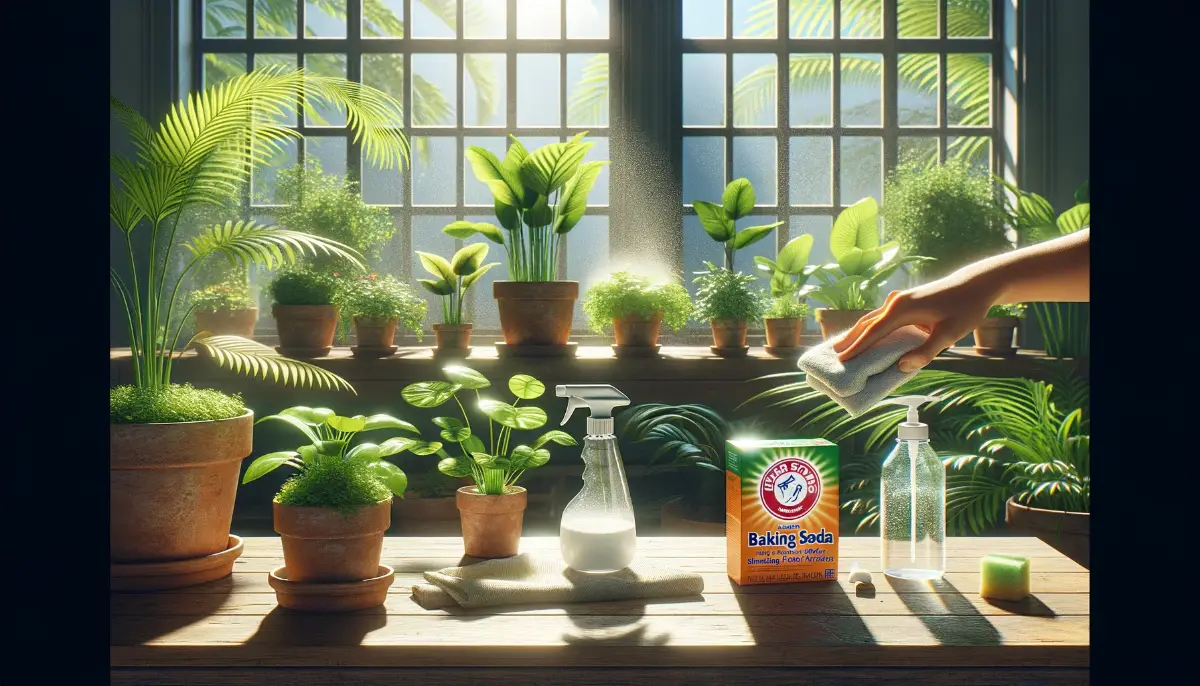Organic sticky traps are a highly effective and environmentally friendly solution for managing pests in your indoor garden. These traps consist of sticky surfaces that attract and capture various insects, providing a non-toxic method to control and monitor pest populations.
Unlike chemical pesticides, organic sticky traps pose no risk to humans, pets, or beneficial insects, making them a safe alternative for maintaining a healthy garden environment.
Designed to target a wide range of common indoor garden pests such as aphids, whiteflies, and fungus gnats, organic sticky traps play a crucial role in integrated pest management (IPM). By using these traps, gardeners can detect pest infestations early, enabling timely interventions that prevent extensive damage to plants.
The simplicity of their use, combined with their cost-effectiveness and reusability, makes organic sticky traps an ideal choice for both novice and experienced gardeners.
Benefits of Using Organic Sticky Traps
Non-Toxic Pest Control
- Safe for Humans and Pets: Organic sticky traps do not contain harmful chemicals, making them a safe option for homes with children and pets.
- Environmentally Friendly: These traps do not contribute to environmental pollution, unlike chemical pesticides that can harm soil and water sources.
Effective Pest Monitoring
- Early Detection: Sticky traps help in identifying pest problems early, allowing for prompt action before infestations become severe.
- Continuous Monitoring: By regularly checking the traps, gardeners can track pest populations and trends over time, aiding in effective pest management strategies.
Wide Range of Target Pests
- Versatility: Organic sticky traps are effective against a variety of indoor garden pests such as aphids, whiteflies, spider mites, and fungus gnats.
- Specificity: Different colored traps (e.g., yellow for general pests, blue for thrips) can be used to target specific types of pests more effectively.
Easy to Use
- Simple Installation: No special skills or tools are needed to set up sticky traps, making them accessible for all gardeners.
- User-Friendly Design: Instructions are typically straightforward, and traps can be placed in strategic locations without hassle.
Cost-Effective Solution
- Affordable: Sticky traps are relatively inexpensive compared to other pest control methods.
- Long-Lasting: Many sticky traps are reusable or have a long lifespan, reducing the frequency of replacements and overall costs.
Reduced Plant Damage
- Protects Plant Health: By capturing pests early, sticky traps help prevent significant damage to plants, ensuring healthier growth and better yields.
- Maintains Aesthetic Appeal: Fewer pests mean less visible damage to leaves and flowers, keeping the garden looking vibrant and healthy.
Types of Organic Sticky Traps
Yellow Sticky Traps
Description: These traps are coated with a sticky substance and are yellow in color, which is highly attractive to many common indoor garden pests.
Target Pests: Effective against aphids, whiteflies, leafminers, fungus gnats, and more.
Usage: Suitable for general pest monitoring and control. Ideal for use in various locations throughout the indoor garden.
Blue Sticky Traps
Description: Similar to yellow traps but colored blue, specifically designed to attract certain pests.
Target Pests: Particularly effective against thrips, which are more attracted to blue than yellow.
Usage: Best used in areas where thrips are known to be a problem. Can be used in conjunction with yellow traps for comprehensive pest control.
Red Sticky Traps
Description: These traps are red and use the same sticky coating to capture pests.
Target Pests: Effective for pests like spider mites that may be attracted to red.
Usage: Useful in specific situations where pests show a preference for red over other colors.
Double-Sided Sticky Traps
Description: These traps have sticky surfaces on both sides, increasing the trapping area.
Target Pests: Effective against a wide range of pests, similar to yellow and blue traps.
Usage: Ideal for areas with high pest activity, as they can capture insects from both sides.
Cardboard Sticky Traps
Description: Made from biodegradable cardboard and coated with an organic sticky substance.
Target Pests: Effective against a variety of pests such as aphids, whiteflies, and fungus gnats.
Usage: Environmentally friendly option that can be composted after use.
Hanging Sticky Traps
Description: Designed to be hung from ceilings, hooks, or stakes. Often come with pre-punched holes or hooks for easy hanging.
Target Pests: Effective for flying insects like whiteflies, aphids, and gnats.
Usage: Best for areas where pests are likely to fly and gather, such as near light sources or above plant canopies.
Ground Sticky Traps
Description: These traps are placed on the ground or soil surface, specifically designed to capture crawling insects.
Target Pests: Effective against crawling pests like ants, springtails, and soil-dwelling larvae.
Usage: Placed directly on the soil surface around the base of plants to intercept crawling insects.
Waterproof Sticky Traps
Description: Made with waterproof materials to withstand humid and moist conditions often found in indoor gardens.
Target Pests: Effective against the same range of pests as standard sticky traps but durable in wet environments.
Usage: Ideal for use in areas with high humidity or near watering systems.
By selecting the appropriate type of organic sticky trap based on the specific pests and conditions in your indoor garden, you can maximize the effectiveness of your pest management efforts.
How to Use Organic Sticky Traps
Choosing the Right Trap
Select Based on Pest Type: Identify the specific pests you are targeting. Yellow traps are generally effective for most pests like aphids and whiteflies, while blue traps are particularly effective for thrips.
Consider Trap Size: Choose a trap size that is appropriate for the scale of your garden. Larger gardens may require larger or more numerous traps.
Placement of Traps
Position at Plant Height: Place the traps at the same height as the plants to maximize the chances of capturing pests.
Even Distribution: Distribute the traps evenly throughout the garden to cover as much area as possible.
Strategic Locations: Place traps near windows, doors, and other entry points where pests are likely to enter. Also, position traps near plants that are particularly susceptible to pests.
Setting Up the Traps
Assemble According to Instructions: Follow the manufacturer’s guidelines for assembling the traps. This usually involves peeling off protective layers to expose the sticky surface.
Attach to Stakes or Hang: Secure the traps to stakes placed in the soil or hang them using hooks or strings. Ensure they are stable and unlikely to be dislodged.
Maintenance and Monitoring
Regular Checks: Inspect the traps regularly, ideally every few days, to check for captured pests.
Replace When Necessary: Replace the traps when they are full of insects or when the sticky surface is no longer effective. Some traps may need to be replaced every few weeks, while others can last longer.
Record Findings: Keep a record of the types and quantities of pests captured. This information can help in understanding pest trends and adjusting your pest management strategies accordingly.
Disposal and Replacement
Proper Disposal: Dispose of used traps in a sealed plastic bag to prevent captured pests from escaping.
Regular Replacement: Replace traps at intervals recommended by the manufacturer, or sooner if they become covered in debris or lose their stickiness. Regular replacement ensures continuous pest control.

How to Use Sugar Water to Boost Indoor Plants Health
FAQs for Organic Sticky Traps
What are organic sticky traps and how do they work?
Organic sticky traps are devices coated with a non-toxic, sticky substance that captures insects when they come into contact with the surface. They attract pests through color or placement and trap them to reduce their population.
Are organic sticky traps safe to use around children and pets?
Yes, organic sticky traps are safe for use around children and pets. They do not contain harmful chemicals and are non-toxic, making them an environmentally friendly pest control option.
What types of pests can organic sticky traps capture?
Organic sticky traps can capture a variety of indoor garden pests, including aphids, whiteflies, fungus gnats, thrips, spider mites, and leafminers.
How do I choose the right color of sticky trap for my pest problem?
Yellow sticky traps are generally effective for a wide range of pests, while blue sticky traps are specifically designed to attract thrips. Choosing the right color depends on the specific pests you are targeting.
Where should I place the sticky traps in my indoor garden?
Place sticky traps at plant height, evenly distributed throughout the garden. Position them near windows, doors, and other entry points, as well as close to plants that are particularly susceptible to pests.
How often should I check and replace the sticky traps?
Check the sticky traps every few days to monitor pest activity. Replace the traps when they are full of insects or when the sticky surface is no longer effective, typically every few weeks.
Can I use sticky traps outdoors as well as indoors?
Yes, sticky traps can be used both indoors and outdoors. However, outdoor conditions such as wind, rain, and larger insect populations may require more frequent monitoring and replacement.
Are there any pests that sticky traps do not effectively capture?
Sticky traps are effective against many flying and crawling pests but may not be as effective for larger insects or pests that do not rely on visual cues for movement. Integrated pest management may require additional methods for comprehensive control.
Do sticky traps attract beneficial insects as well?
Sticky traps can potentially capture beneficial insects. To minimize this, place traps strategically and consider using other pest control methods in conjunction with sticky traps to protect beneficial species.
How should I dispose of used sticky traps?
Dispose of used sticky traps by placing them in a sealed plastic bag to prevent captured pests from escaping. Check local regulations for disposal guidelines, especially for organic or biodegradable traps.








